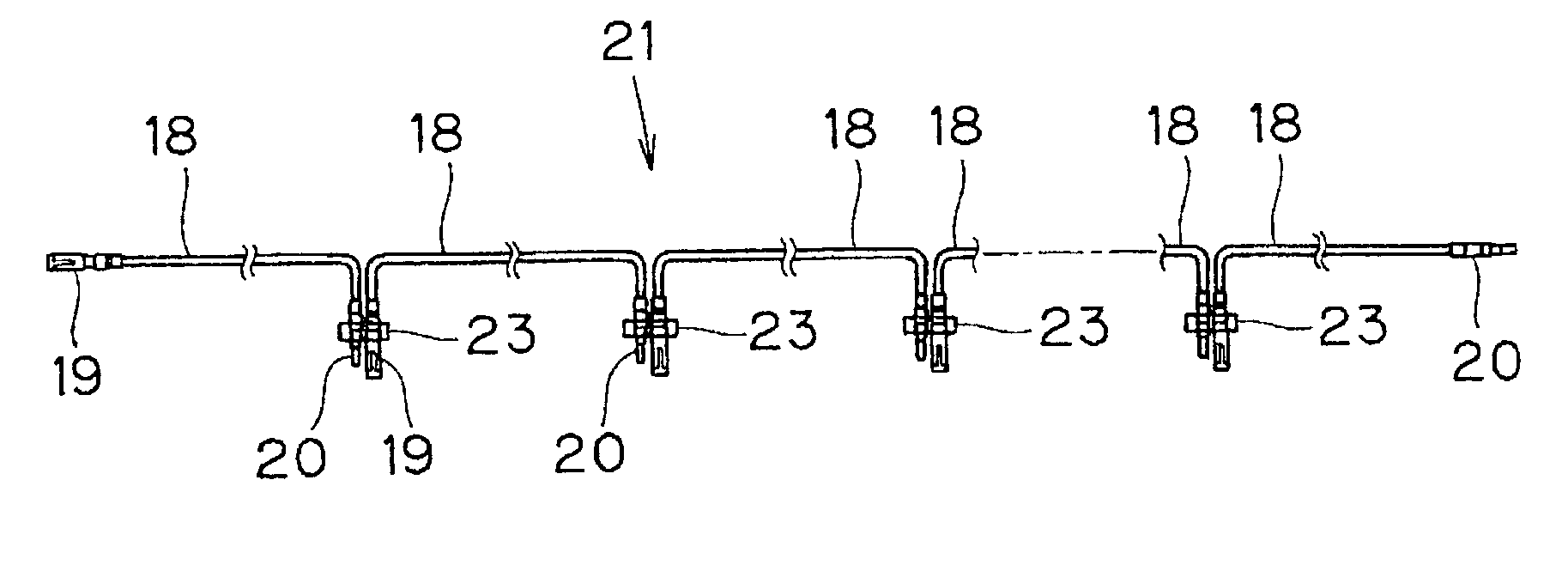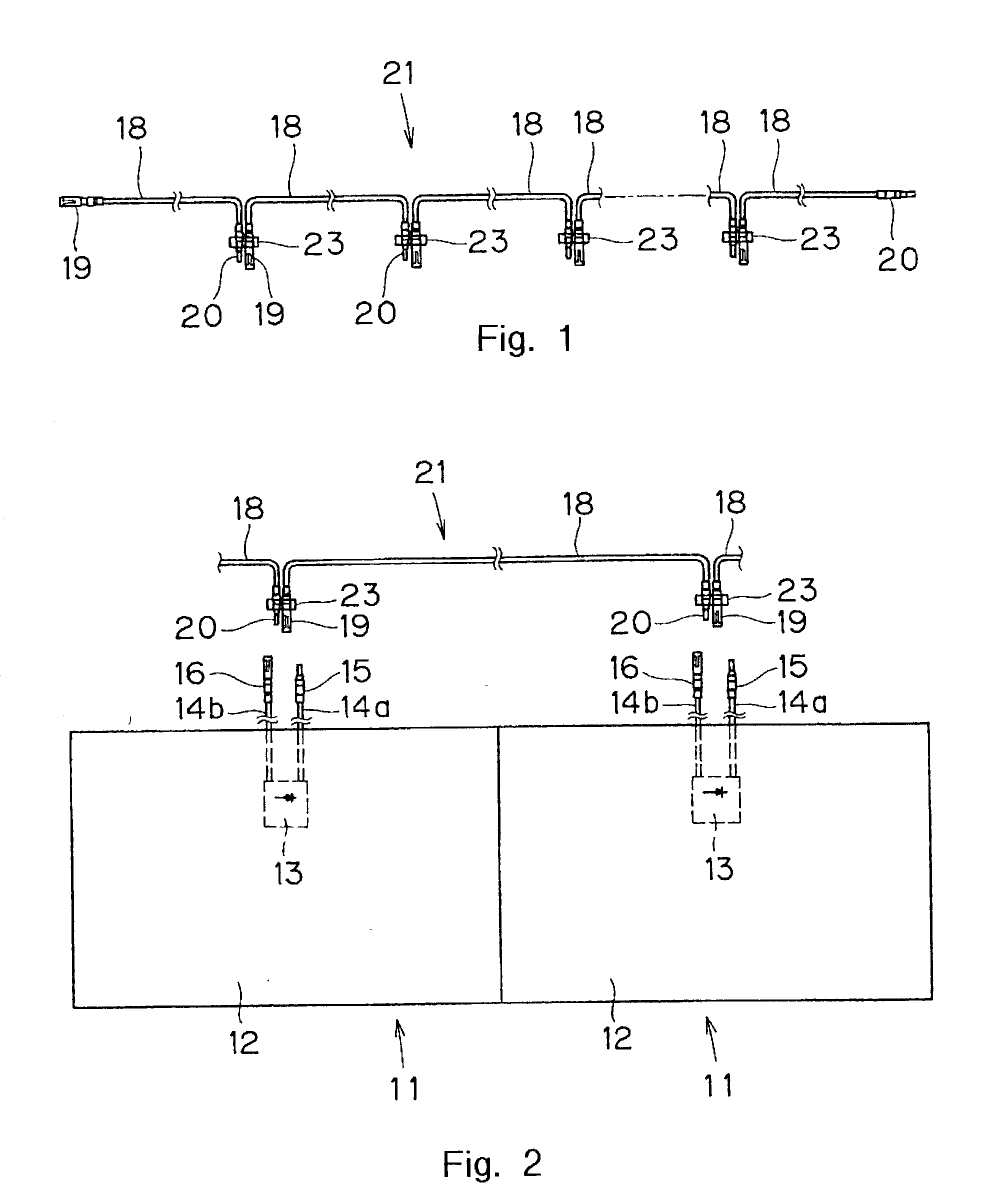Method and device for connecting solar battery modules
a technology of solar cells and solar cells, applied in the direction of coupling device connections, semiconductor devices, electrical apparatus, etc., can solve the problems of easy miscounting and confusion of the number of connections required to join solar cells
- Summary
- Abstract
- Description
- Claims
- Application Information
AI Technical Summary
Benefits of technology
Problems solved by technology
Method used
Image
Examples
first embodiment
[0032] The following describes the present invention with reference to FIGS. 1 through 6. Similar to the structure of a conventional solar battery module, output cables 14a and 14b extend an appropriate length from terminal box 13 located on the rear surface of module body 12 of solar battery module 11. Male connector 15 and female connector 16 are attached to the extended ends of each cable 14a and 14b respectively.
[0033] Relay cables 18 are provided at an appropriate length for connection to each solar battery module 11, one end of each relay cable 18 being equipped with female connector 19 that can be removably connected to male connector 15, and the other end with male connector 20 that can be removably connected to female connector 16.
[0034] When laying out and connecting each of a prescribed number of solar battery modules 11 in series, relay cable assembly 21 is first constructed by mutually joining, in series, a number of relay cables 18 that corresponds to the number of sol...
second embodiment
[0041] In this second embodiment, clamp 23 is used to maintain male connector 15 and female connector 16 as a connector pair, connectors 15 and 16 being respectively attached to the terminal ends of output cables 14a and 14b of solar battery module 11. As each connector 15 and 16 of solar battery module 11 and each connector 19 and 20 of relay cable assembly 21 form respective connector pairs through their insertion into clamp 23, pairs of cables can be mutually joined in the same manner as if one-piece connectors were used. This results in the overall solar battery module connection operation becoming equivalent to one using bi-pole connectors, a fifty percent reduction in the number of connections that must be made when compared to connecting method in which single connectors are used, and a highly efficient method of connecting each solar battery module 11 in series. Furthermore, while this connecting method provides the same advantages as one using bi-pole connectors, it does so...
PUM
 Login to View More
Login to View More Abstract
Description
Claims
Application Information
 Login to View More
Login to View More - R&D
- Intellectual Property
- Life Sciences
- Materials
- Tech Scout
- Unparalleled Data Quality
- Higher Quality Content
- 60% Fewer Hallucinations
Browse by: Latest US Patents, China's latest patents, Technical Efficacy Thesaurus, Application Domain, Technology Topic, Popular Technical Reports.
© 2025 PatSnap. All rights reserved.Legal|Privacy policy|Modern Slavery Act Transparency Statement|Sitemap|About US| Contact US: help@patsnap.com



